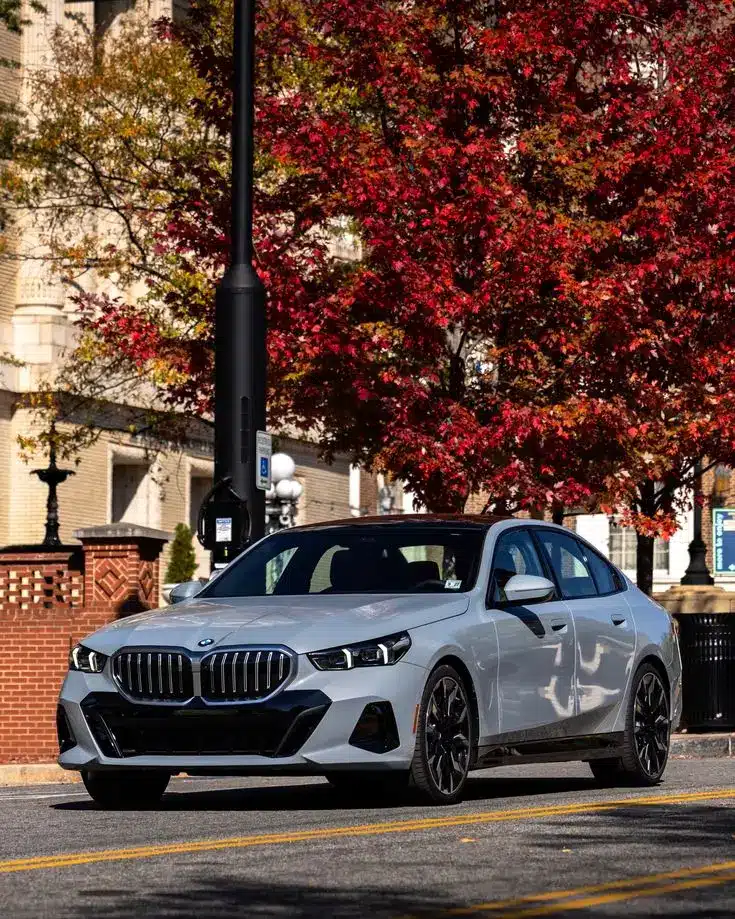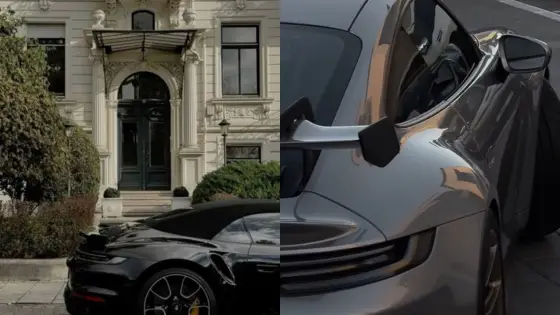Germany’s automotive legacy represents engineering excellence, performance, and luxury in the global car market. For decades, iconic brands like Mercedes-Benz, BMW, Porsche, Audi, and Volkswagen have defined automotive standards with their distinctive approaches to design and technology. German cars are renowned for their performance-oriented engineering, precision craftsmanship, and innovative features that often set industry benchmarks before appearing in vehicles from other manufacturing countries.
While German vehicles excel in driving dynamics and premium features, they present unique considerations for ownership. Many enthusiasts appreciate the superior handling and driving experience these cars deliver, but maintenance requirements and associated costs typically exceed those of Japanese or American alternatives. This practical reality creates an interesting balance between the undeniable quality of German engineering and the long-term ownership experience.
Key Takeaways
- German automotive manufacturers prioritize performance, advanced engineering, and luxury features that have influenced global car design standards.
- Ownership of German vehicles typically involves higher maintenance costs but rewards drivers with superior driving dynamics and premium experiences.
- The German automotive industry continues to lead technological innovation while adapting to evolving environmental standards and electric mobility challenges.


History and Evolution of German Cars
German automotive engineering has been at the forefront of innovation and quality for over a century. The nation’s deep relationship with automobiles has created globally recognized brands that combine technical excellence with distinctive design.
Origins in Germany
The modern automobile was born in Germany when Karl Benz patented his motorized vehicle in 1886. Shortly after, Gottlieb Daimler and Wilhelm Maybach developed their own version of the motorized vehicle. These inventors laid the foundation for what would become Mercedes-Benz, one of the world’s oldest automotive brands.
By the early 20th century, other iconic German brands emerged. BMW began as an aircraft engine manufacturer before transitioning to motorcycles and cars after World War I.
The 1930s saw the conception of the “German People’s Car” (Volkswagen), with the goal of creating an affordable vehicle for the masses. This effort culminated in the production of the iconic Beetle, which would later become one of the best-selling cars in history.
Impact on the Global Automotive Industry
German automotive engineering has consistently set standards for the global industry. The focus on precision, performance, and innovation has made German cars synonymous with quality and reliability worldwide.
BMW, Audi, Mercedes-Benz, and Volkswagen have expanded globally, establishing manufacturing facilities across continents while maintaining their reputation for technical excellence. Their commitment to research and development has led to numerous technological breakthroughs in safety, efficiency, and performance.
You can see German influence in automotive design principles adopted by manufacturers worldwide. The autobahn-inspired engineering approach emphasizes high-speed stability and durable construction.
Today, German automakers face the transition to electric vehicles and autonomous driving technologies, areas where they continue to invest heavily to maintain their competitive edge.


Major German Car Manufacturers
Germany is home to some of the world’s most prestigious automobile manufacturers, known for their engineering excellence, innovation, and quality. These companies have shaped the global automotive industry through their commitment to performance, luxury, and technological advancement.
Volkswagen Group
Volkswagen, founded in 1937, has grown to become one of the largest automotive manufacturers globally. The company’s name literally translates to “people’s car,” reflecting its original mission to create affordable vehicles for the average German family.
Today, the Volkswagen Group owns multiple brands including Porsche, Lamborghini, Bentley, Bugatti, and Seat. The iconic Volkswagen Beetle, with over 21 million units produced, remains one of the most recognizable cars in automotive history.
Volkswagen’s Golf model revolutionized the hatchback segment when it debuted in 1974. The company has also been at the forefront of diesel technology, though this was tarnished by the emissions scandal in 2015. Currently, VW is heavily investing in electric vehicles with its ID series, aiming to transition toward sustainable mobility.
BMW Group
BMW (Bayerische Motoren Werke) began in 1916 as an aircraft engine manufacturer before pivoting to motorcycles and then automobiles in the 1920s. The company is renowned for creating “The Ultimate Driving Machine” as their slogan suggests.
BMW’s lineup includes the popular 3, 5, and 7 Series sedans, X-Series SUVs, and the innovative i-Series electric vehicles. The BMW 2002 model from the 1960s-70s established the company’s reputation for creating sports sedans with exceptional handling.
The manufacturer is known for its inline-six engines and rear-wheel drive layouts that provide balanced handling. BMW also owns Mini and Rolls-Royce, expanding its market presence across different segments. Their commitment to performance is exemplified by their M division, which produces high-performance versions of standard models.
Daimler AG
Daimler AG, parent company of Mercedes-Benz, traces its roots to Karl Benz’s creation of the first practical automobile in 1886. Mercedes-Benz has consistently set standards for luxury, safety, and technological innovation in the automotive industry.
The company offers a comprehensive range from the compact A-Class to the flagship S-Class sedan and G-Class SUV. Mercedes-Benz pioneered many safety features now standard across the industry, including crumple zones, anti-lock braking systems, and electronic stability control.
The Mercedes-AMG division produces high-performance variants with hand-built engines. Their Formula 1 success has further cemented their engineering prowess. Recently, Mercedes has expanded into electric vehicles with the EQ lineup, demonstrating their adaptation to changing market demands.
Audi AG
Audi’s history began in 1909 and became part of the Auto Union group in 1932, symbolized by the four-ring logo representing the merger of four companies. Today, Audi operates as a subsidiary of the Volkswagen Group while maintaining its distinct identity.
Audi revolutionized the industry with its Quattro all-wheel-drive system, introduced in 1980. This technology provided superior traction and handling, especially in adverse conditions. The brand is recognized for its sleek design language, high-quality interiors, and technological innovation.
Popular models include the A4 sedan, Q5 SUV, and the high-performance RS line. Audi’s commitment to advanced lighting technology has resulted in distinctive LED and laser headlights. The company has also embraced electrification with e-tron models, showing its focus on future mobility solutions.


Engineering and Design Philosophy
German automotive engineering embodies a commitment to precision, innovation, and performance that distinguishes these vehicles in the global market. This philosophy balances technical excellence with thoughtful design principles that serve both functional needs and aesthetic aspirations.
Engineering Excellence
German cars are renowned for their meticulous engineering approach that prioritizes quality, durability, and performance. Unlike vehicles designed primarily for efficiency or reliability alone, German manufacturers like Mercedes-Benz, BMW, and Porsche develop cars with outstanding driving experiences as a core objective.
You’ll notice this philosophy manifests in several key areas. The powertrains typically offer precise response and substantial power reserves, even in non-performance models. Suspension systems are carefully calibrated to balance ride comfort with handling precision, creating the characteristic “planted” feeling many drivers appreciate.
Materials selection and build quality represent another cornerstone of German engineering excellence. These manufacturers often employ higher-grade components and more rigorous assembly standards than their competitors. This approach extends to technology integration, where innovations typically undergo extensive testing before implementation.
The engineering teams maintain a forward-thinking mindset, consistently pioneering advancements in safety, efficiency, and performance technology. Many features now common in mainstream vehicles originated in German luxury cars before wider adoption.
Design Aesthetics
German automotive design philosophy centers on purposeful elegance rather than flashy styling. You’ll find that German cars typically exhibit clean lines, balanced proportions, and thoughtful detailing that emphasizes function while creating visual distinction.
Mercedes-Benz exemplifies this approach with its design philosophy oriented toward “long-term effect rather than short-term trends.” This creates cars with lasting appeal rather than following momentary fashion. The design language consistently communicates brand identity while evolving subtly over time.
Controls and interfaces in German vehicles reflect this same thoughtful approach. The placement of switches, displays, and other elements typically follows ergonomic principles with a focus on driver interaction. This philosophy traces back to earlier design thinking that prioritized “large, easy-to-use controls, economy of detail and a limited driver control interface.”
Interior spaces balance comfort with purposefulness. Materials selection often emphasizes quality and tactile satisfaction rather than visual flash. You’ll typically find carefully considered textures, genuine materials where possible, and attention to how different elements work together visually.
The overall design approach creates vehicles that communicate technical competence and sophistication through restraint rather than exaggeration.


Performance and Reliability
German automotive engineering balances impressive performance capabilities with long-term durability. The synthesis of power and longevity has become a hallmark of German vehicles, though reliability ratings vary across brands and models.
Power and Precision
German cars are renowned for their engineering excellence that delivers both power and precision. BMW consistently stands out with responsive handling and powerful engines across their lineup. Their driving dynamics offer what many enthusiasts describe as the ultimate driving experience.
Mercedes-Benz focuses on combining luxury with performance, incorporating advanced technology that enhances both comfort and driving capability. Their AMG division creates particularly potent versions of standard models.
Audi’s Quattro all-wheel-drive system provides exceptional grip and stability, allowing their vehicles to perform admirably in various driving conditions. This technology has become one of Audi’s defining features.
Porsche maintains its reputation for creating some of the most driver-focused vehicles on the market. Their attention to engineering detail results in cars that deliver exceptional feedback and performance metrics.
Longevity of German Cars
According to recent reliability statistics, BMW has emerged as the most reliable German car manufacturer. Their improvements in quality control have yielded more durable vehicles that maintain their value well over time.
The Audi A3 demonstrates impressive reliability with a 93.6% reliability rating, outperforming many competitors in the compact sedan segment. This model represents a good entry point into German engineering without the traditional concerns about maintenance costs.
The BMW 5 Series and 325is both appear frequently in expert recommendations for used German cars with good longevity potential. Their build quality tends to hold up well when properly maintained.
Volkswagen Passat offers solid reliability among German options, particularly models from recent years. Regular maintenance remains essential for maximizing the lifespan of any German vehicle you purchase.
Mercedes-Benz vehicles typically last longer when adhering to strict maintenance schedules. While parts and service can be more expensive, this investment often translates to extended vehicle life and better performance over time.


Technological Innovations
German automakers have consistently pushed the boundaries of automotive technology, combining precision engineering with cutting-edge electronics. These innovations have redefined what drivers can expect from their vehicles in terms of both performance and user experience.
Advancements in Mobility
BMW’s i8 Roadster exemplifies the German commitment to revolutionary mobility concepts with its hybrid powertrain technology that balances performance with efficiency. When you drive a modern German vehicle, you’re experiencing the results of decades of research into alternative propulsion systems. Volkswagen’s ID Buzz Concept demonstrates how German manufacturers are reimagining classic designs with fully electric powertrains.
Mercedes-Benz and Porsche have integrated advanced embedded electronics into their vehicles, creating adaptive systems that respond to driving conditions in real-time. The Porsche Panamera Turbo S E-Hybrid offers impressive power alongside intelligent energy management systems.
German automotive manufacturers have embraced AI technologies to enhance the driving experience. Volkswagen and Mercedes-Benz now incorporate ChatGPT and other AI assistants to provide more intuitive interfaces between you and your vehicle.
Safety and Assistance Systems
Electronic Damper Control systems in German vehicles dynamically adjust suspension settings based on road conditions, providing you with optimal handling and comfort simultaneously. This technology exemplifies how German engineering focuses on creating systems that enhance both safety and driving pleasure.
German automakers have pioneered numerous safety innovations that are now industry standards. Advanced driver assistance systems (ADAS) in brands like Mercedes-Benz and BMW can help you avoid collisions, maintain lane positioning, and adapt to traffic conditions.
Automated parking capabilities, night vision systems, and pedestrian detection features showcase the commitment to comprehensive safety. These technologies not only protect you as the driver but extend protection to other road users as well.
The integration of these safety systems with user-friendly interfaces demonstrates how German manufacturers prioritize both technological sophistication and accessibility in their design philosophy.


Comparative Analysis with Other Manufacturers
German automakers like BMW, Mercedes-Benz, and Audi have distinct characteristics compared to manufacturers from other regions. These differences span design philosophy, performance priorities, and overall reliability.
German vs. Japanese Manufacturers
German vehicles differ significantly from their Japanese counterparts in several key aspects. While Mercedes-Benz and BMW focus on performance and luxury, Japanese manufacturers like Toyota prioritize reliability and cost-efficiency.
Japanese cars typically offer lower maintenance costs and better long-term reliability scores. You’ll find that Toyota vehicles often require fewer repairs over their lifespan compared to German alternatives.
German manufacturers excel in driving dynamics and premium interior materials. When you drive a BMW, you’re experiencing a vehicle designed with performance as a primary consideration, not just as transportation.
In terms of innovation, both have different approaches. Japanese brands implement proven technology incrementally, while German manufacturers often introduce cutting-edge features that may require refinement over time.
German vs. American Manufacturers
American manufacturers like Ford and GM have historically targeted different market segments than German premium brands. You’ll notice American vehicles often emphasize value, size, and practicality over the driving experience.
German cars typically feature more sophisticated engineering and higher-quality interior materials than their American counterparts. When you sit in a Mercedes-Benz, the attention to detail is immediately apparent in the fit and finish.
In terms of performance, German vehicles generally offer more refined handling characteristics. BMW’s driving dynamics stand out compared to most American-built alternatives in the same price range.
American manufacturers have traditionally excelled in producing larger vehicles like trucks and SUVs, while German brands have built their reputation on luxury sedans and performance-oriented models.
Maintenance costs tend to be higher for German vehicles. You’ll likely pay more for parts and service for a Mercedes-Benz than for comparable American models.


Consumer Insights
German car buyers prioritize safety, everyday practicality, and reliability when making purchasing decisions. The market continues to evolve with changing demographics and technological advancements influencing consumer preferences.
Market Trends
In Germany, new car sales have been declining due to several factors. Inflation has led to persistently high petrol prices, dampening enthusiasm for car usage among German consumers. This economic pressure is forcing buyers to reconsider their vehicle options and usage patterns.
Physical showrooms remain dominant in the purchasing process, with 75% of German consumers buying their last vehicle through traditional dealerships. Only 24% opted for online platforms, showing a continued preference for in-person experiences when making such significant investments.
Safety and suitability for everyday use top the list of purchase criteria for German consumers. You’ll find that practical considerations outweigh luxury features for most buyers in the current economic climate.
The transition to electric vehicles (EVs) has been slower than anticipated in Germany. This hesitancy reflects consumer concerns about infrastructure, range, and the higher initial purchase price of EVs compared to conventional vehicles.
Customer Loyalty and Satisfaction
German car brands continue to enjoy strong customer loyalty based on their reputation for engineering excellence and reliability. You can observe how brands like Mercedes-Benz, BMW, and Volkswagen have cultivated multi-generational customer relationships through consistent quality and innovation.
Comfort features have evolved as key satisfaction drivers. Modern German vehicles offer advanced ergonomics, superior noise insulation, and sophisticated climate control systems that enhance the overall driving experience.
Reliability remains a cornerstone of customer satisfaction with German automobiles. Long-term dependability translates to better resale values and lower total cost of ownership, factors that resonate strongly with practical German consumers.
After-sales service quality significantly impacts brand loyalty. Dealerships with transparent maintenance policies, fair pricing, and efficient service departments tend to retain customers more effectively over time.
New technologies like driver assistance systems and connectivity features are increasingly influencing satisfaction levels among younger buyers. You’ll notice that German manufacturers are investing heavily in these areas to maintain relevance with tech-savvy consumers.


Future of German Automotive Industry
The German automotive sector stands at a critical crossroads in 2025. Industry experts point to this year as potentially decisive for German automakers as they navigate technological transitions and global competition while trying to maintain their reputation for engineering excellence.
Electrification and E-Mobility
German manufacturers are accelerating their electric vehicle (EV) strategies amid increasing pressure from global competitors. BMW, Mercedes-Benz, and Volkswagen Group have committed billions to EV development, with plans to offer dozens of new electric models by 2030.
This transition comes with significant challenges. The shift to EVs could cost the German automotive industry approximately 186,000 jobs by 2035, with a quarter of these positions already eliminated.
You’ll notice German brands focusing on premium EV experiences that maintain their luxury reputation while embracing innovation. Companies are developing proprietary battery technologies to increase range and decrease charging times.
Infrastructure remains crucial to this transition. German automakers are partnering with energy companies to expand charging networks across Europe to address range anxiety concerns that may discourage potential EV buyers.
Autonomous Driving Technologies
German vehicles continue to push the boundaries of autonomous driving capabilities. Mercedes-Benz has achieved Level 3 autonomy certification, allowing drivers to take their hands off the wheel in certain conditions.
BMW and Audi are close behind with similar systems in development. You’ll find these technologies focus on enhancing safety while maintaining the driving pleasure German brands are known for.
The regulatory environment in Germany has evolved to support autonomous mobility testing. Special zones in cities like Munich and Hamburg allow companies to test driverless technologies in real-world settings.
Collaboration has become essential in this space. German manufacturers are forming partnerships with tech companies to develop the advanced sensors, mapping systems, and AI required for true autonomous mobility.


Environmental Impact and Sustainability Efforts
German automakers have significantly shifted their focus toward environmental responsibility in recent years. Their initiatives encompass both reducing emissions from vehicles and implementing more sustainable manufacturing processes throughout their supply chains.
Emission Standards and Regulations
German car manufacturers face strict EU regulations that have pushed innovation in emission reduction technologies. By 2030, BMW aims to cut CO₂ emissions per vehicle and kilometer driven by at least 50% compared to current levels. Mercedes-Benz has set an even more ambitious target of achieving a net carbon-neutral new vehicle fleet by 2039 across the entire product lifecycle.
These goals require substantial changes to your driving options. You’ll notice more electric vehicles (EVs) and plug-in hybrids in German manufacturers’ lineups as they transition away from traditional combustion engines. Volkswagen Group has invested billions in EV platforms, while Porsche and Audi continue developing synthetic fuels as alternative solutions.
Despite these efforts, critics note that German automakers historically prioritized luxury and performance over environmental concerns. Recent shifts represent a necessary adaptation to regulatory pressures and changing consumer preferences.
Sustainable Manufacturing Practices
The sustainability push extends beyond what you drive to how it’s made. German automotive firms have increased implementation of sustainable supply chain management (SSCM) throughout their operations. This includes responsible sourcing of raw materials, with the German auto sector consuming approximately 30% of aluminum, 15% of lead, and 13% of steel imports to Germany.
BMW leads with initiatives like using recycled plastics and sustainable leather alternatives in vehicle interiors. Their factories increasingly run on renewable energy, with several facilities achieving carbon-neutral status through solar and wind power integration.
Mercedes has pioneered carbon-neutral factory operations at multiple sites. Their approach focuses on three areas: reducing energy consumption, using renewable sources, and offsetting unavoidable emissions through verified environmental projects.
You’ll find these sustainability efforts reflected in newer German vehicles through lightweight materials, recyclable components, and manufacturing processes that consume less water and energy than previous generations.


Ownership and Maintenance
Owning a German car comes with specific considerations regarding costs and upkeep. German automotive engineering emphasizes quality, but this often translates to unique ownership experiences compared to vehicles from other regions.
Cost of Ownership
German vehicles typically have higher initial purchase prices compared to many non-luxury alternatives. The premium pricing reflects the advanced engineering, higher-quality materials, and precision manufacturing that goes into brands like Mercedes-Benz, BMW, and Audi.
Depreciation affects German luxury vehicles significantly in the first few years. You can expect a 40-50% drop in value within the first three years of ownership, making certified pre-owned options financially attractive.
Insurance costs tend to be higher for German cars due to their classification as luxury vehicles and potentially higher repair costs. Your premiums may be 15-30% higher than for mainstream brands.
Fuel efficiency varies across models, but many modern German vehicles incorporate advanced technologies to improve economy without sacrificing performance.
Maintenance and Servicing
German cars often require specialized knowledge and equipment for proper servicing. You’ll need to find qualified technicians familiar with the specific systems and technologies in your vehicle.
Routine maintenance costs typically exceed those of non-luxury brands. Oil changes, brake services, and regular inspections may cost 20-40% more than equivalent services for mainstream vehicles.
Many owners report that German cars, when properly maintained, can deliver excellent long-term reliability. The key is adhering to manufacturer-recommended service intervals and not deferring maintenance.
Parts replacement represents a significant portion of ownership costs. Genuine OEM parts command premium prices, though aftermarket alternatives have become increasingly available for common components.
Preventive maintenance proves especially important with German vehicles, as addressing small issues early can prevent more costly repairs later in the ownership cycle.
- 191shares
- Facebook0
- Pinterest191
- Twitter0



